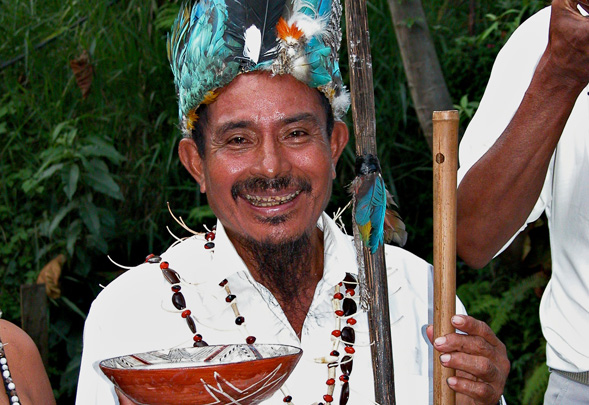Ecuadorian Art
Richard Burkett, professor of ceramics, has visited Ecudaor since 1994 to study indigenous people and their use of pottery.

San Diego State University professor Richard Burkett has traveled to Ecuador each year since 1994 to study how indigenous villages use pottery in their daily lives.
Burkett’s findings were published in the prestigious Studio Potter, a journal that promotes discussion of technology, criticism, aesthetics and history within the ceramics community.
The explorations began when Burkett got in contact with Joe Molinaro, a professor at the University of Kentucky. With the help of a Fulbright grant, Partners of the Americas and a grant from SDSU, the two ceramics gurus traveled to Ecuador to interact with native Ecuadorians and study what roles pottery plays in their culture.
Burkett and Molinaro transformed their findings over the years into a book, “Mythical Figures and Mucawas.”
Mucawas are a specific type of bowl used for drinking a delicacy of Ecuadorian villages. The drink is made from the yucca plant and is fermented with saliva. The end result? A sour yogurt-like drink called chicha.
Burkett says he enjoys studying an unconventional ceramic style. Many ceramics studies follow Southwestern American Indian tribes, but South American pottery is teaming with uncharted territory. “It’s a kind of pottery that isn’t that well known,” Burkett said.
All the pottery is handmade and harbors incredible detail.
Bringing pottery back to life
The introduction of cheaper alternatives contributed to the decline of traditional Ecuadorian pottery over the last decade. A custom that was once passed down from generation to generation is becoming scarce.
"The traditional pottery techniques are decreasing because the villages are being introduced to aluminum and plastic," Burkett said. "They are status symbols and they're cheaper and easier to use."
During recent trips, Burkett and his colleague focused on bringing back the pottery traditions to the villages.
Fostering friendships
In the nearly 20 years he's been visiting Ecuador, Burkett and his colleague have developed many friendship.
“My favorite aspects of this research are the people,” Burkett said. “Over time we’ve developed relationships with some very interesting people and I love being able to keep them going.”
Keeping traditions alive
Despite the dying tradition, Burkett aims to use his research to keep the pottery methods alive in the Ecuadorian villages.
Burkett is involved with, Partners of the Americas, a nonprofit organization that funds pottery making techniques in the villages, but doesn’t accept any money from the pottery that is yielded. Instead, the women in the villages are paid simply to keep the traditions alive.
“The pottery is only made by women and the techniques are passed down from generation to generation,” Burkett said. “A lot of villages we’ve visited over the years aren’t teaching the young women these techniques and it’s important to keep these traditions going.”
Burkett acknowledged SDSU for helping him to succeed.
“I’m really fortunate SDSU was so supportive of my research,” he said. “Without the university’s support, none of this would have been possible.”



